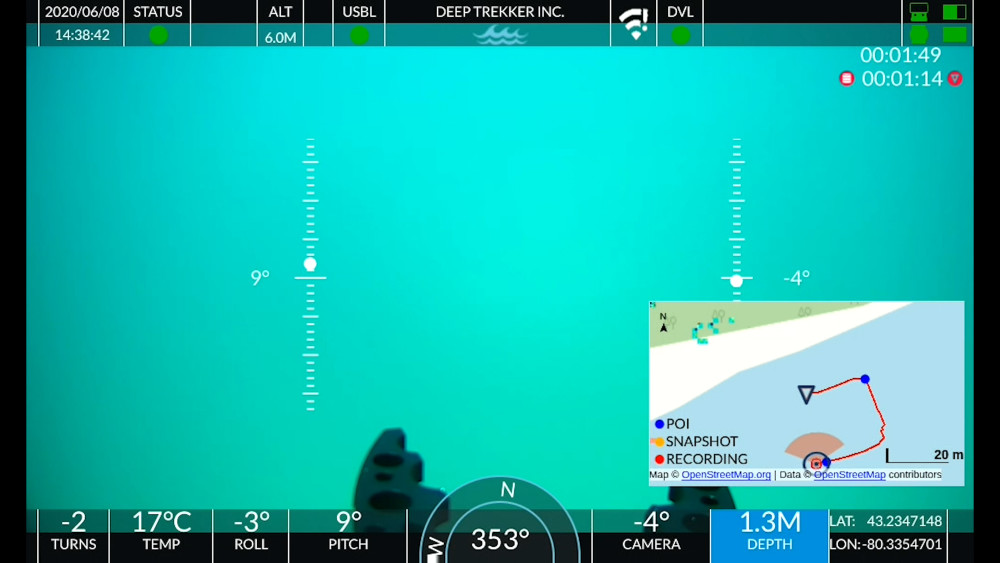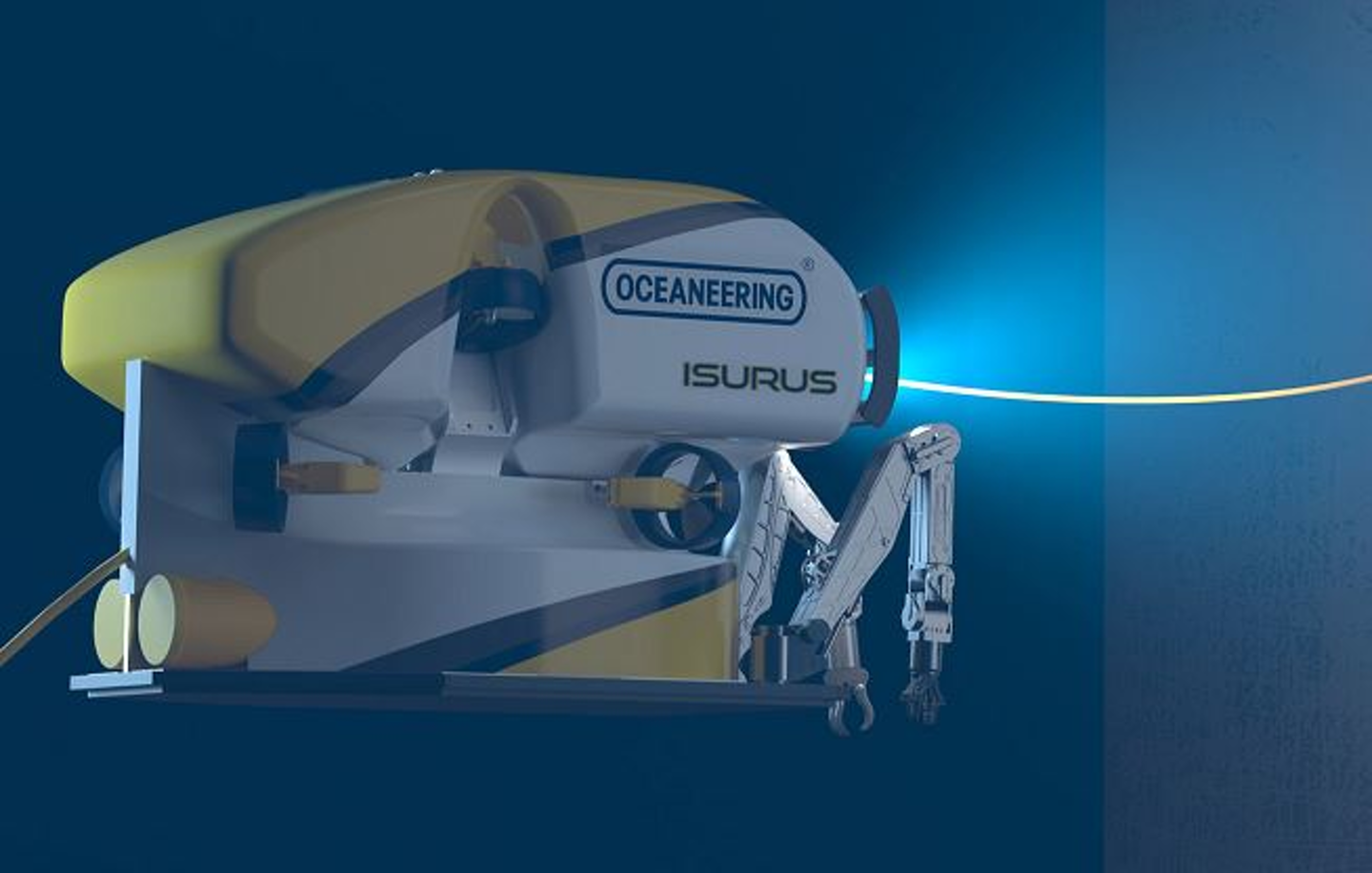Home › Forums › General › General Board › ROV risk assessment
- This topic has 12 replies, 8 voices, and was last updated 14 years, 12 months ago by
Ray Shields.
-
AuthorPosts
-
July 1, 2009 at 1:02 pm #2653
shohebshaikh
ParticipantHey everybody,
Can any one help me to find a sample of a ROV launch and recovey Risk Assessment document.
Any help would be appreciated..
Thanx in advance.
July 2, 2009 at 8:13 am #23958aliboy
ParticipantShoheb,
There are plenty of sample RAs out there in the ether, not necessarily relating to ROV launch/recovery procedures. However it can be seen how they identify hazards involved in the task, precautions required and implemented to remove or minimise the risk and the subsequent risks remaining, hopefully now at a safe level. As each vessel and system have their own individual hazards I consider it very important that the assessor does not use some generic risk assessment maybe created for a completely different scenario. Remember, your colleagues lives will be affected by your decisions.
If I take it you are an operational pilot you should see your supervisor for further advice as he should be competent at carrying out RAs due to the position he holds.
July 2, 2009 at 11:51 am #23959HelpMaBoab
ParticipantIt should be included in the ROV spread’s operations manual.
July 3, 2009 at 8:49 am #23960subseascott
ParticipantAs LARS’s vary so much how can you have a generic risk assessment, is it an A-Frame over the side job or is it a cursor system through a Moonpool…….
Also, if you aren’t capable of identifying the risks surely you shouldn’t be doing the job in the first place?
July 4, 2009 at 8:16 pm #23961K2
ParticipantSubseascott
This guy may be a trainee wanting some info…….
😉
July 8, 2009 at 4:41 pm #23962Ray Shields
ParticipantGive us some more information as to exactly what it is you are after or why.
Are you carrying out the operation and want to see a RA (your system should already have some)
Are you writing RAs? (If so you should have been trained on how to carry out RAs)
Any existing system should already have RAs written. I am a great dis-believer in any Generic RAs. They may be used as a starting point for a SPECIFIC Ssystem on a SPECIFIC piece of equipment, but there can not be a generic one to cover all that is adequate.
July 21, 2009 at 9:10 pm #23963GraemeRSU
ParticipantGeneric Risk assessments have been found to cause accidents as they normally do not cover any site specific hazards.
A site specific risk assessment should always be done for any task as no two ROV systems are the same and the vessel itself may have specific hazards that are not apparent on other vessels in relation to the operation of the ROV. Also if you make changes to a system risk assessments and procedures should always be reviewed to check you haven’t created a new hazard due to the change.
Procedures for tasks should also follow the same rules i.e. physically state the correct location of all your required isolations that need to be put in place for specific tasks etc.
Maintenance work orders again should be the same i.e. dont just state to grease the bearings, tell them exactly how many grease points they need to inject grease into and their specific locations for that system. If you don’t, maintenance doesn’t get done correctly by personnel that are not 100% familiar with the system. Their excuse is always i didn’t know that grease nipple was there.
If you dont take this type of approach then tasks/maintenance will not get done correctly, potential hazards are not identified and someone could end up getting injured or killed because someone forgot to isolate something correctly.
Finally toolbox talks should always be carried out with all parties on shift before commencing any work and they should also be redone when shift changes occur, this involves reviewing the procedure and risk assessment for the task along with identifying any additional control measures due to hazards caused by any other tasks that are being performed at the same time so that folk know what to do.
FYI – Due to the large increase of new more complex ROV’s being built over the last few years the experience level of ROV crews have become more diluted by a significant number of new personnel. Therefore it is very important to take this approach to help ensure that tasks and maintenance are still done safely by both existing and new personnel.
July 22, 2009 at 8:17 am #23964James McLauchlan
ParticipantRisk Assessments, Toolbox talks etc are all very well and good but whilst I support the concept what I have seen creep in is the following….
Newer personnel have been seen not to think for themselves when it comes to safety. They assume that because the task has been analysed, a risk assessment written up and discussed, a pre shift toolbox talk taken place plus a work permit issued with a copy on display that they are safe as houses. They then walk outside and do something completely stupid (safety wise) because they thought all bases were covered and were therefore absolved of any further thought on safety matters. Too much dotting of the i’ crossing the T’s and not enough common sense being employed.
In many instances the shallow ‘safety first‘ phrase has been rammed so hard down people throats that they are becoming totally numb to it’s intended purpose…..by being required to complete numerous bits of paper and attends meetings, then…sign here to say that you bear witness to having attended the safety meeting, toolbox talks.
By all means carry out a LARS risk assessment and make sure that it is fully discussed before being implemented, but do not ram it down peoples throats every single shift change or it’s effect may become useless other than that of being a document to be dragged out should something go wrong and an inquiry be held.
Should you have a crew change review it again so that the new peeps know the score, but do it in such a way that people are aware of what it all means by running over it live outside on what, to some, may be unfamiliar equipment.July 22, 2009 at 8:39 am #23965shohebshaikh
ParticipantThank you everybody for your advise.
I didnot mean to copy from any risk assessments documents.
But i just wanted to se how diffrent risk assesment are drafted….
Anywayz a lo of you have given me healthy pointers that will help me ..
i sincerely thank all of you.July 22, 2009 at 12:10 pm #23966GraemeRSU
ParticipantRef James comments, As long as people have read the documents at least once and understand it you don’t need to ram it down their throat every shift except for when it’s been a while since the task was done or to check that everyone has read the lastest version of the procedure and risk assessment. Even then you should always ask everyone if there are any hazards that might have been overlooked before commencing the task.
FYI you wouldn’t just have one risk assessment for the LARS. They have to be task specific i.e. launch and recovery, splitting the TMS from the ROV, retermination of the umbilical etc etc.
If a task hasn’t been performed in a while you should always refresh everyone’s memory by going through the task specific procedures & risk assessments
As a minumim with all new personnel it should be fully discussed otherwise how else do you advise what the hazards are? It also applies to existing personnel if the procedure has changed or there are other tasks being performed at the same time which in turn create additional hazards.
As you said folk do not have common sense these days hence why even though it’s a pain you have to have toolbox talks to discuss the task and associated hazards. If they are new then it requires a more experienced member of the crew to show them how to do it and monitor them until they are happy that they are competent.
No one should be asked to perform a task without having understood how to perform the task and the associated hazards
It’s like asking a new tech to go disconnect the power cables without first telling them how and where to switch off and isolate the power supply. You just don’t do that.
Jumping in head first running is not the best approach. Stopping for a minute to think about what you are doing might mean the difference in doing it safely or killing yourself in the process.
On a final note I guess all of this paperwork is the price you have to pay if folk don’t have any common sense.
One last point after re-reading your comments, is that a toolbox talk should always involve a walk around the worksite where the task is to be performed to help explain things more easily and also identify any additional hazards that might become apparent from the walkaround. I never said that you should only do it in an office environment.
July 24, 2009 at 10:59 pm #23967Ray Shields
ParticipantOne thing that annoys me about RAs is that people (not just offshore, I have seen RAs done in other industries) churn them out but the people who are affected by them never read them or even get to see them.
There is no point in doing a RA identifying hazards and putting controls in place if the people involved do not get told what the hazards are or what controls they are supposed to be using!
The whole "safety culture" thing is just turning into a paperwork exercise IMHO.
July 25, 2009 at 10:54 am #23968GraemeRSU
ParticipantOne thing that annoys me about RAs is that people (not just offshore, I have seen RAs done in other industries) churn them out but the people who are affected by them never read them or even get to see them.
There is no point in doing a RA identifying hazards and putting controls in place if the people involved do not get told what the hazards are or what controls they are supposed to be using!
The whole "safety culture" thing is just turning into a paperwork exercise IMHO.
Wholey agree with you on that, you have to go over it before you do the task otherwise accidents happen.
There are too many incidents which have happened recently and one of the common things found was that the task wasn’t discussed and the associated hazards highlighted before commencing the task. All because they chose not to do a toolbox talk before commencing work. This resulted in new personnel that were not familiar with the equipment performing work without adequate supervision and understanding of the task.
There was one incident that the task required 2 personnel in two different locations via hard wire comms. They had one experienced and one new tech do the work except the experienced tech decided to show the second tech how to do his bit which mean’t the task wasn’t being monitored from the second location and resulted in the equipment being damaged. They should of had a third person assisting so that the new tech could be trained but because they didn’t do a toolbox talk, the hazard of trying to do it from one location wasnt highlighted.
Training should always be considered to be an additional hazard whereby the trainee should be an additional body on top of what is required to perform the task.
July 26, 2009 at 8:47 am #23969Ray Shields
ParticipantUnfortunately when companies send out 2 trainees (or at least "new" people) with a Supervisor it makes it very difficult to do any decent, safe work!
-
AuthorPosts
- You must be logged in to reply to this topic.



